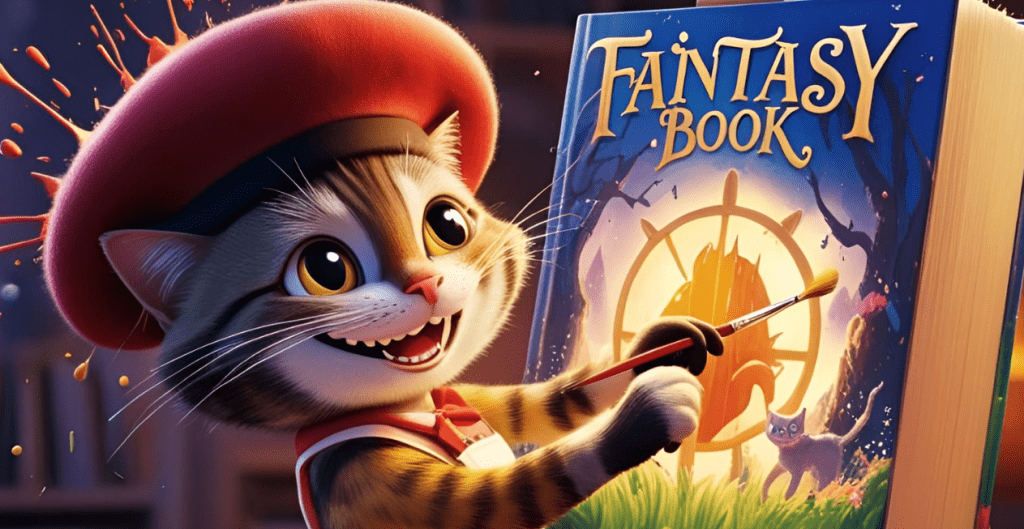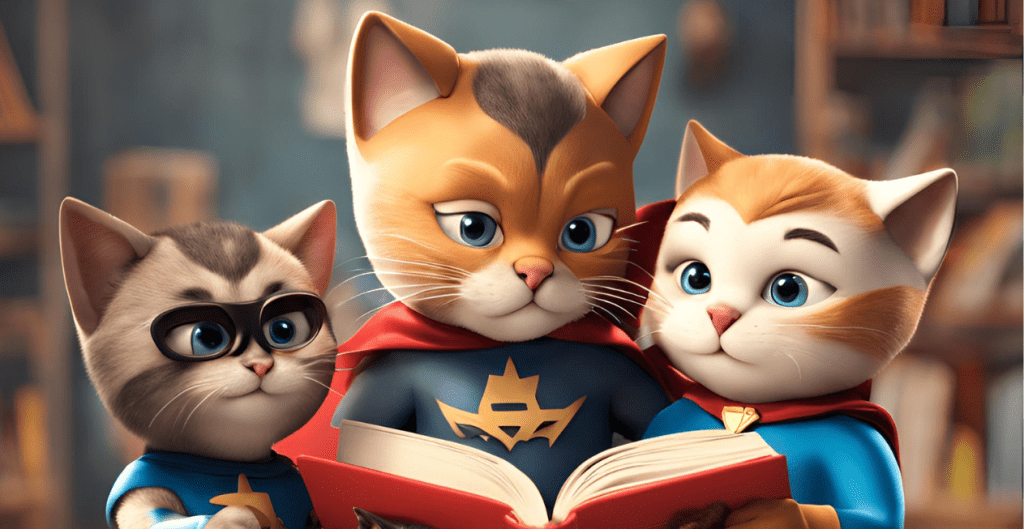How to Price Your Book for Maximum Sales Without Undervaluing It

As an author, one of the most critical decisions you’ll face is how to price your book. It’s not just about picking a number and hoping for the best. Pricing a book involves a delicate balance between ensuring maximum sales and valuing your work appropriately. If you price your book too high, you risk deterring potential buyers, but if you price it too low, you risk undermining its perceived value, which can impact sales in the long term. In this blog post, we’ll dive deeper into why book pricing is so crucial, how to analyze your target market, and the many factors you should consider when deciding on a price that allows you to maximize your book’s potential. We will also look at common pitfalls to avoid and actionable steps you can take to ensure that your book gets priced right for both you and your readers. Why Book Pricing is Crucial Price is one of the most influential factors that can determine whether a book sells or not. It’s one of the first things potential readers will notice when browsing a book on a platform like Amazon or when deciding whether to purchase at a bookstore. When you price your book, you’re not just putting a number on it; you are sending a message about its worth. The right price can not only encourage purchases but also shape how readers view your book. Many new authors make the mistake of underpricing their books, hoping it will encourage more sales. While this may generate a few early sales, it could also lower the book’s perceived value. A book that’s priced too low can signal to readers that it’s inferior or less polished, even if it’s the opposite. You should think of your book as an investment for readers—set a price that reflects its quality and content. On the other hand, pricing too high can make it difficult to attract readers, especially when you’re just starting out. Higher prices create higher expectations from readers who will want your book to offer real value. They might hesitate to purchase if they aren’t familiar with your writing. In essence, your book’s price is a reflection of its value to your readers and your professional image as an author. Understanding Your Market and Genre One of the first steps in determining how to price your book is to understand your target market and the norms in your genre. A $15 price tag might be standard for a well-known author’s paperback, but it could be considered steep for a debut novel by an unknown author in the same genre. To start, look at other books in your genre—what are they priced at? Are they e-books or print books, or both? How long are these books? The length of the book can often play a role in determining the price. For example, self-help books, academic texts, or biographies might be priced higher due to the perceived value they offer in terms of the knowledge or research behind them. Romance novels or young adult books may be priced lower, as readers in these genres tend to be more price-sensitive. However, understanding genre norms is just one part of the equation. Think about your audience. Is your target reader looking for a quick read or something more substantial? Are they willing to invest in higher-quality writing or are they more interested in low-cost entertainment? Understanding this will help you set a price that resonates with potential buyers without alienating them. How to Set a Price Based on Your Goals Your pricing strategy should align with your overarching goals as an author. Do you aim to sell many copies quickly to build momentum, or are you hoping to establish yourself as a high-value author with a premium price? Both approaches are valid, but your pricing strategy will be different depending on your objectives. Launching Your First Book: If this is your first book, your goal might be to get your name out there and build a readership. You might want to make your book as accessible as possible to ensure as many people as possible read it and leave reviews. In this case, setting a lower price (like $0.99 or $2.99 for an e-book) can help encourage readers to take the leap and give your book a try. Once you’ve built a solid readership and established some credibility, you can raise the price accordingly. A lower price may also help your book reach a wider audience through book promotions, discounts, or bundle deals. Many platforms, including Amazon’s Kindle Direct Publishing (KDP), allow authors to temporarily lower their prices to increase visibility and sales. This strategy can be effective, but it should be approached strategically. You don’t want to be caught in the trap of constantly running discounts—this can hurt your long-term sales potential. Building a Career as an Author: On the other hand, if you’re not focused on immediate sales but rather on building a long-term career, pricing your book higher may be an effective strategy. This is especially true if your book provides significant value—whether it’s in-depth research, complex storytelling, or expert-level insight. A higher price can suggest to readers that your book is a premium offering that deserves serious attention. This works particularly well if you are a seasoned author or have built a fanbase through other books or platforms. By setting a higher price, you signal to your audience that they are getting something of significant value in exchange for their money. This approach can also allow you to make fewer sales at a higher price point, rather than focusing on selling large quantities at a lower price. The Hidden Costs of Publishing As a self-published author, you may be tempted to set a low price to encourage sales. However, before making that decision, it’s important to account for the various expenses involved in publishing and promoting your book. Production Costs: While the cost of producing an e-book is low, the expenses for print books
Why Book Cover Designs Matter More Than We Like to Admit

We’ve all heard the saying, “Don’t judge a book by its cover.” It’s a noble sentiment—one that urges us to look beyond appearances and value substance over style. But when it comes to books, the truth is far less idealistic. The reality is that book covers matter—a lot. In a world overflowing with reading options, a book cover is often the first and only chance an author has to capture a reader’s attention. It’s a visual handshake, a silent pitch that happens in a matter of seconds. Whether consciously or not, readers make snap decisions based on covers, and those decisions influence sales, perception, and even the way a book is interpreted. Let’s break down exactly why book cover design is far more important than we often admit. 1. First Impressions: The Power of Instant Recognition Imagine walking into a bookstore or scrolling through an online catalog. Thousands of books compete for your attention, but your eyes naturally gravitate toward certain covers. Why? Because humans process images 60,000 times faster than text. Before you’ve even read the title, the colors, fonts, and imagery have already triggered a subconscious reaction. A well-designed cover can: Signal the book’s genre and tone instantly Create intrigue and curiosity Make the book stand out from the competition Establish an emotional connection with the reader On the other hand, a poorly designed cover—or one that doesn’t align with its intended audience—can make a book easy to overlook, even if it contains a masterpiece inside. 2. Genre Expectations: Readers Know What They Want Every book belongs to a specific visual language based on its genre. Readers may not realize it, but they have an internalized sense of what a book in their preferred genre should look like. For example: Romance novels often feature soft pastels, elegant fonts, and imagery of couples or heartfelt moments. Thrillers tend to use bold typography, dark tones, and high-contrast images to evoke tension. Fantasy books frequently showcase elaborate, illustrated designs with mystical elements. Non-fiction covers usually rely on clean, modern designs with striking typography to establish authority. If a book’s cover doesn’t match its genre, potential readers may ignore it—even if they would have loved the content inside. This is why cover designers study market trends and ensure books visually “fit” their intended audience. 3. The Science Behind Colors, Fonts, and Imagery Good book cover design isn’t just about making something “pretty.” It’s about psychology. Every design choice—colors, fonts, and imagery—affects how a reader perceives the book. 🔹 Color Psychology: Red: Passion, danger, urgency (often used in thrillers and action novels) Blue: Trust, calmness, intelligence (popular in non-fiction and self-help books) Black & Dark Tones: Mystery, sophistication (common in horror, thriller, and literary fiction) Bright, Playful Colors: Fun, lightheartedness (seen in romance, YA, and contemporary fiction) 🔹 Typography Choices: Serif fonts (like Times New Roman) feel traditional and authoritative—great for historical fiction or serious literature. Sans-serif fonts (like Helvetica) give a modern and clean look, often seen in non-fiction. Handwritten or decorative fonts add personality, often used in fantasy and quirky novels. 🔹 Imagery & Symbolism: Minimalist covers suggest sophistication and depth. Illustrated covers create warmth and approachability. Photographic realism conveys authenticity, especially in memoirs and biographies. When all these elements come together correctly, they create an immediate and lasting impression that resonates with the target audience. 4. Book Covers and Emotional Connection A book cover isn’t just a marketing tool—it’s an emotional bridge between the book and the reader. A compelling cover can evoke curiosity, nostalgia, excitement, or even fear. Think about some of the most iconic book covers: The Great Gatsby (F. Scott Fitzgerald) – The floating eyes and cityscape instantly evoke a sense of mystery and decadence. Twilight (Stephenie Meyer) – The simple image of hands holding an apple symbolizes temptation and forbidden love, perfectly aligning with the book’s themes. Harry Potter (J.K. Rowling) – The illustrated covers transport readers straight into the magical world before they even open the first page. These covers don’t just represent the books—they become part of the experience. Readers associate them with emotions, memories, and cultural significance. 5. The Marketing & Sales Impact of a Great Cover From a business standpoint, the right book cover can be the difference between a bestseller and a book that fades into obscurity. Publishers and indie authors alike invest in professional cover design because they understand its direct impact on: ✅ Sales & Click-Through Rates – On online platforms like Amazon, where books are competing for attention, a professionally designed cover dramatically increases the likelihood of a reader clicking on it. ✅ Social Media & Word-of-Mouth Marketing – A striking book cover is highly shareable. If a cover is visually appealing, readers are more likely to post about it on social media, increasing exposure. ✅ Branding for Authors – A consistent cover style helps authors establish brand recognition. Readers who love one book by an author are more likely to recognize and pick up another with a similar design style. 6. The Downside of Ignoring Cover Design So what happens when a book has a bad cover? Readers might assume it’s amateur or low-quality. It might fail to attract the right audience, leading to poor sales. It could cause confusion—for example, if a thriller novel has a light, whimsical cover, it may turn off both thriller fans and casual readers. Even the best-written book can struggle to find success if its cover fails to communicate its value. That’s why professional design is one of the best investments an author can make. Final Thoughts: Why We Should Judge Books by Their Covers While we might wish that books were judged solely on their content, the truth is that covers shape reader expectations, influence decisions, and ultimately impact sales. A great book cover is more than just an artistic choice—it’s a psychological tool that guides potential readers toward picking up a book and diving into its pages. It tells a story before the first word is ever read.
10 Ways to Encourage Kids to Love Reading.

Helping children develop a love for reading is one of the greatest gifts you can give them. Not only does it improve their literacy skills, but it also broadens their imagination, strengthens their critical thinking, and opens the door to endless possibilities. Here are 10 effective ways to encourage kids to fall in love with books and stories: 1. Create a Reading-Friendly Environment Make your home a space where books are readily available and easily accessible. Set up a cozy reading nook with comfortable seating, good lighting, and a variety of books. Display books on shelves at your child’s eye level to encourage them to explore independently. 2. Let Them Choose Their Books Take your kids to a library or bookstore and let them pick books that interest them. Giving them the freedom to choose makes reading feel like a fun activity rather than a chore. 3. Read Aloud Together Reading aloud to your children is a powerful way to spark their love for stories. Choose books with engaging characters and plots. Use different voices for characters and pause to discuss what’s happening to make the experience interactive. 4. Set an Example Be a role model by showing your own love for reading. Let your kids see you enjoying books, magazines, or newspapers. Talk about what you’re reading to demonstrate that reading is a lifelong activity. 5. Incorporate Books into Daily Life Integrate books into everyday activities. For example, read recipes while cooking, explore travel books when planning a trip, or look up fun facts about a topic they’re interested in. 6. Make Reading Interactive Turn reading into an engaging activity by asking questions, making predictions, or acting out scenes. For example, if you’re reading about animals, encourage your child to mimic their sounds or movements. 7. Reward Reading Efforts Create a reward system to motivate reading. For instance, set up a reading challenge with a fun prize at the end. It could be as simple as earning stickers or having a special outing. 8. Explore Different Formats Not every child connects with traditional books. Introduce them to graphic novels, audiobooks, or interactive eBooks. These formats can be especially appealing for reluctant readers. 9. Start a Family Book Club Choose a book that everyone in the family can read together. Have weekly discussions about the chapters you’ve read, and encourage your child to share their thoughts and favorite parts. 10. Encourage Writing Help kids create their own stories by writing and illustrating them. This activity not only boosts creativity but also helps them appreciate storytelling, which often leads to a greater interest in reading. Supporting Your Child’s Reading Journey If you’re looking for more tailored guidance, our coaching services and workshops at Blonde Cat Books can provide valuable tools to inspire your child’s love for reading. Whether you’re a parent seeking strategies or an educator looking for resources, we’re here to help. For additional tips or personalized 1-on-1 support, visit our coaching page to learn how we can assist you in nurturing a lifelong reader. Encouraging kids to love reading is a journey that takes patience, creativity, and consistency. By incorporating these tips into your daily life, you can foster a strong foundation for a lifelong love of books. Marsha Moore Marsha is the author behind Blonde Cat Books, creating engaging stories for preteens, teens, and families. She also mentors aspiring writers, helping them bring their stories to life. All Posts Facebook Instagram Youtube
Reading and Mindfulness: How Books Can Help You Be Present

Reading can be a powerful tool for practicing mindfulness, helping you stay present and focused in the moment. In this post, we’ll explore how immersing yourself in books can enhance your mindfulness practice and offer peace in today’s fast-paced world.
How to Stay Inspired Through Rejection and Criticism

Rejection and criticism are tough but unavoidable parts of a writer’s journey. In this post, we explore practical strategies to help you stay inspired and motivated, using feedback as a tool for growth rather than discouragement.
How to Overcome Writer’s Block as an Aspiring Author

In this post, we’ll explore practical techniques to overcome writer’s block, from embracing freewriting exercises and setting small, achievable goals to finding inspiration in unexpected places. Whether you’re drafting your first novel or revising a short story, these tips will help you push past the block and reconnect with your passion for storytelling.
Top 10 Storytelling Techniques for Aspiring Authors

In this blog post, we’ll uncover the top 10 storytelling techniques that every aspiring author should know. These practical strategies will help you structure your narrative, captivate your readers, and turn your ideas into unforgettable stories. Let’s dive in!
